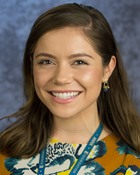ACR Updates Including the New Stereotactic Breast Biopsy QC Manual
D Gress1*, I Barreto2*, P Butler3*, O Mawlawi4*, W Geiser4*, M Mahesh5*, (1) American College of Radiology, Reston, VA, (2) University of Florida College of Medicine, Gainesville, FL, (3) Derwood, MD, (4) MD Anderson Cancer Center, Houston, TX, (5) Johns Hopkins University, Perry Hall, MD
Presentations
WE-AB-207-0 (Wednesday, 7/13/2022) 7:30 AM - 9:30 AM [Eastern Time (GMT-4)]
Room 207AB
The American College of Radiology (ACR) is a dynamic medical specialty society representing approximately 39,000 radiologists, radiation oncologists, nuclear medicine physicians, and medical physicists. The College has undertaken several initiatives in recent years that benefit medical physicists. The first presentation in this session will provide a brief and high-level update on the activities of the ACR, including key information about the new accreditation database, ACRedit Plus.
ACR staff and member-volunteers are collaborating with other clinical medical physicists to assess the generalizability of estimating CTDI using a helical exposure methodology. This session will include a presentation on the limitations of traditional axial measurements for calculating CTDI and present preliminary results on feasibility and generalizability of a helical method.
In 2017 and 2021, Diagnostic Reference Levels (DRLs) and Achievable Doses (ADs) were published in Radiology for adult and pediatric CT exams, respectively. This session will include a presentation on the development of DRLs and ADs using the ACR’s Dose Index Registry (DIR), the results of these large-scale analyses, how they compare to similar international studies, and future initiatives for DRLs.
Modality QC manuals are an important component of the accreditation programs offered by the ACR. These manuals standardize practice across accredited facilities. QC manuals are in development for the nuclear medicine and PET accreditation programs, and this session will include a presentation on their progress. The goal of these QC programs will be to standardize the quality performance evaluations performed in nuclear medicine and PET clinics. Methods and frequency of testing will be drawn from established ACR, AAPM, and NEMA guidance. When the manuals are complete, facilities applying for accreditation will have to adhere to the frequencies and methods described in the QC manual. Similarly, the QC Manual for ACR’s Stereotactic Breast Biopsy Accreditation Program is incompatible with some modern image-guided breast biopsy techniques, so an all-new QC manual is being developed to accommodate these modern clinical equipment and practices. This session will also include a presentation on the progress of this new manual.
What constitutes image quality is not a single number, rather, it is many measures from image data depending on desired clinical goals or requirements. A small group of ACR member-volunteers is collecting consensus opinions from radiologists and imaging physicists on the relative importance image quality features in CT, in order to set development priorities for quantitating such features. Invited respondents are targeted by leadership in professional organizations and by subspecialty, including imaging physicists and radiologists specializing in neuro, thoracic, pediatric, cardiovascular, MSK, abdominal, and emergency. The final presentation in this session will present preliminary findings of this consensus gathering initiative.
Learning objectives:
1. Apply access processes for ACR’s new accreditation web platform
2. Characterize the feasibility and generalizability of estimating CTDI using helical exposures
3. Summarize the status and future directions of DRLs in the US
4. Describe statuses of three ACR QC manuals
5. Explain for ACR’s prioritization process for quantification of image quality features
Handouts
- 175-63267-16291659-183369-86434607.pdf (Dustin Gress)
- 175-63268-16291659-183099-1513895335.pdf (Izabella Barreto)
- 175-63269-16291659-183157-1017192606.pdf (Priscilla Butler)
- 175-63271-16291659-183342-839330259.pdf (William Robert Geiser)
Keywords
Not Applicable / None Entered.
Taxonomy
Not Applicable / None Entered.
Contact Email















